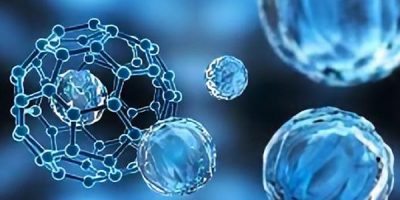
Fullerene is a unique nanomaterial, the molecules of which have the shape of a closed sphere (or ellipsoid), consisting of carbon atoms that are located at the vertices of pentagons or hexagons. Researchers Kroto, Smalley and Curl were awarded the Nobel Prize in 1996 for the discovery of fullerenes.
The class of fullerenes includes a large number of fullerenes, differing mainly in the number of atoms in one molecule (60, 74, 76, 78, 80, 82, etc. up to 540), the number of atoms in the lattice (pentagon or hexagon), the shape of the molecule (ball, truncated icosahedron, rugby ball). The most famous and well-studied is C60 fullerene, which has 60 carbon atoms. It is also called Buckminsterfullerene, after the American architect Buckminster Fuller, who used pentagons and hexagons in the framework of his domed buildings.
One of the most important features of C60 fullerene is its physical and chemical activity, i.e. the ability to bind to molecules and atoms of other substances. At the same time, the obtained substances and structures acquire completely new unique properties that can have practical use.
Fullerene C60 has potential for use in various industries such as semiconductors, metallurgy, polymers, solar cells, lubricants, batteries, surface coatings, diamond synthesis, cosmetics, medicine and health.
Today, large-scale studies on the use of fullerenes are being carried out all over the world. One of the most interesting properties of fullerene C60, which is already used in real life today, is its high biological activity. Fullerene C60 has antioxidant properties exceeding greatly those of any other substances. Also it has high lipophilicity, the ability to form supramolecular complexes. These and other properties can make it possible to use fullerene to combat aging, to treat various diseases, for targeted drug delivery, etc.
One of the most important discoveries on the way to the biological use of fullerene is hydrated fullerene – a supramolecular complex of a fullerene molecule, which is encased in a shell of water molecules. Creation of such complex made it possible to solve the main problem in the biological use of fullerene – its hydrophobicity. Unlike fullerene, hydrated fullerene is highly soluble in water, which makes it possible to look for unique possibilities of biological application.
Our company has developed a new technology for the production of hydrated fullerene, which excludes the presence of any kind of impurities in its composition and is environmentally friendly. This allows us to explore options for the biological use of hydrated fullerene without fear of its negative effects on the human body.

